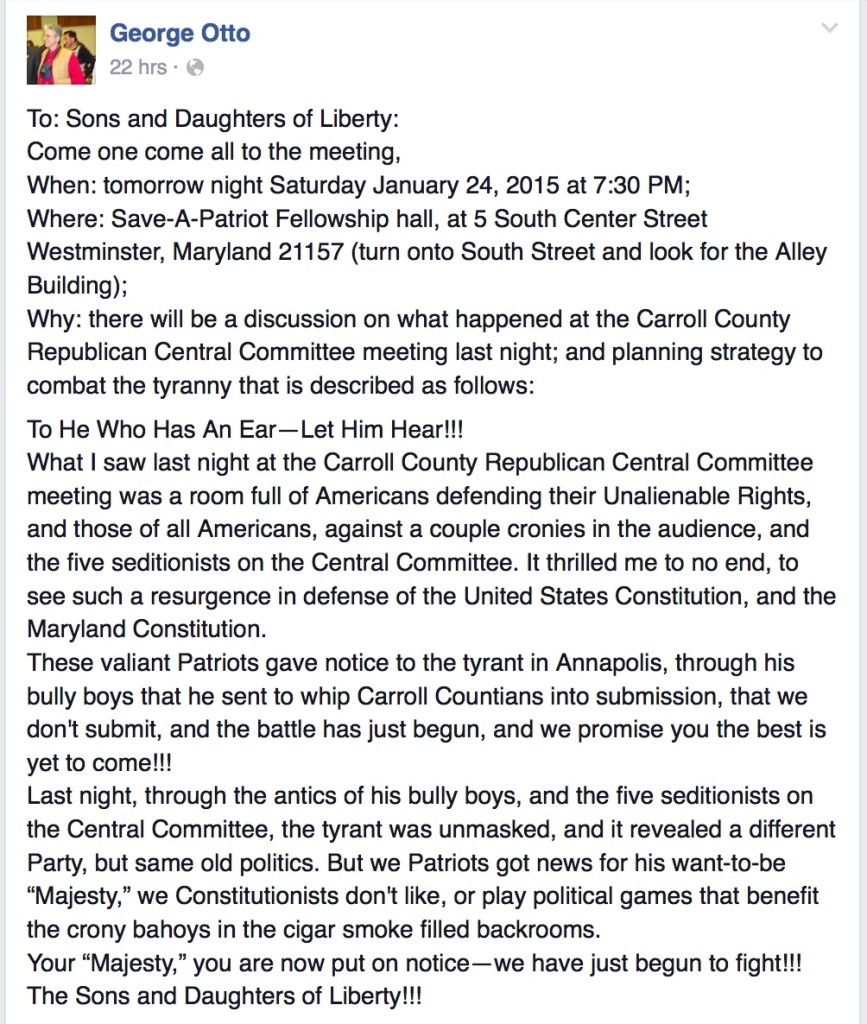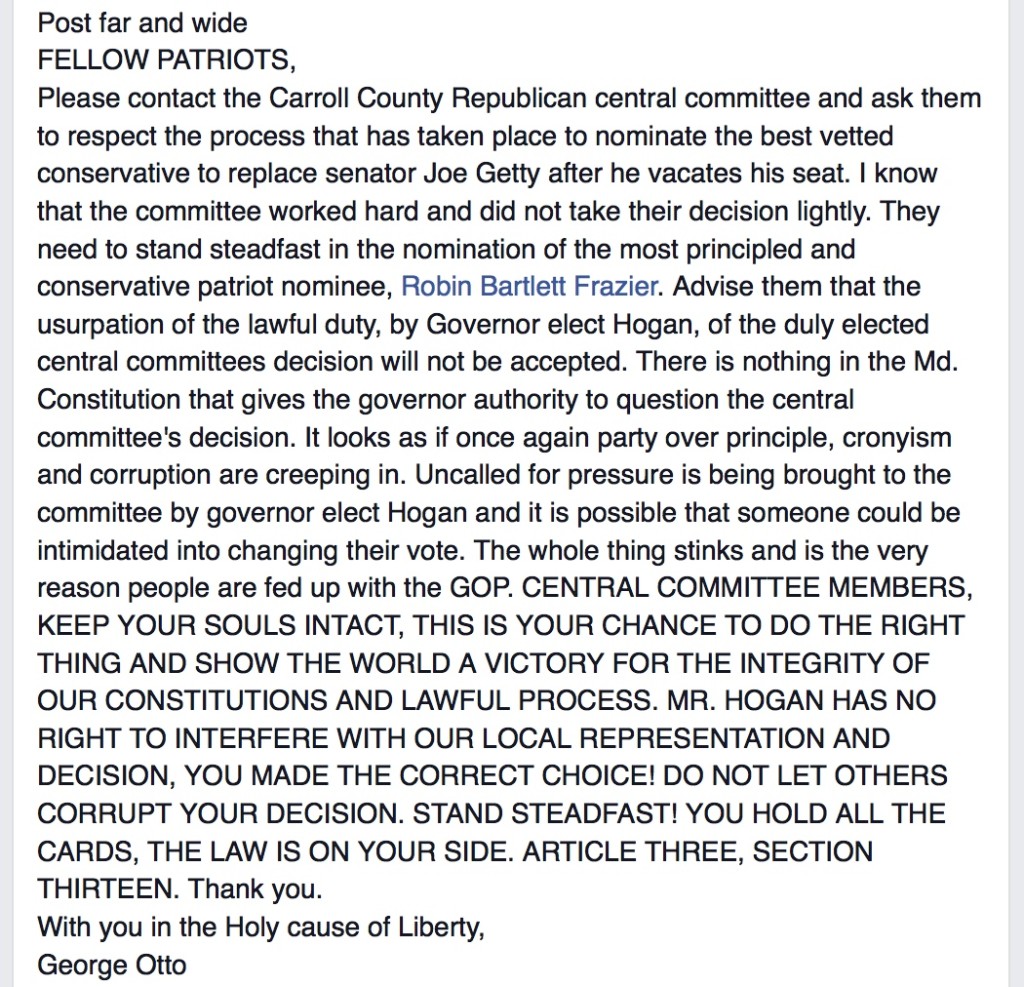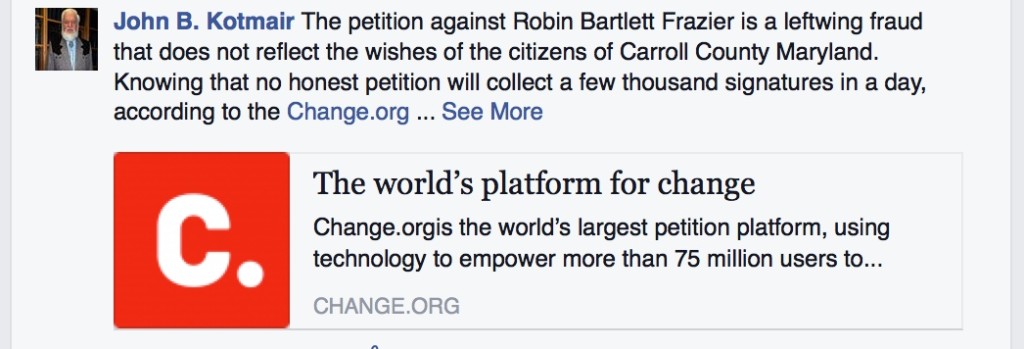At the request of Montgomery County Executive Ike Leggett, the County’s legislative delegation has filed a bill (MC 24-15) to allow the County to create a new, independent Transit Authority. The bill is already generating controversy and an online petition against it on change.org (or, in this case, don’t change.org).
If passed, the bill would permit (read again: permit, not require) Montgomery County to create a Transit Authority. The new authority could potentially run anything from the current Ride-On system to a new BRT (bus-rapid transit) system to parking lots and roads around the County.
The County Executive would appoint the members of the Transit Authority board subject to confirmation by the County Council. This independent body would then carry out independently a transit program as passed by the Council. This program could be relatively narrow (e.g. take over the existing Ride-On system) or broader (e.g. construct and operate a new BRT system).
Taxes and Finances
As written, the bill would allow (again: allow, not mandate) the County to pass a property tax that is designated to raise funds specifically for the Transit Authority. These monies would not count toward the County Charter limit.
Additionally, if transportation expenditures (e.g. Ride-On) are moved over from the County budget, the County could reduce taxes or spend the money on other needs because they would no longer be counted as within the Charter limit.
Less Different Than You Think
The County already has the power to do much of this through special taxing districts that have the power to construct transit (i.e. make capital expenditures) and raise funds outside the Charter limit. However, special taxing districts cannot operate transit.
Though the Transit Authority might spend monies on building and operating new systems, it would also likely realize some savings elsewhere. For example, a new transit line would likely result in needing to spend less on Ride-On buses.
Advantages
The clear advantage of this proposal is that it would allow Montgomery to take greater control its transportation future. Monies raised in Montgomery would stay in Montgomery. The County could choose to build projects that the State is not ready or able to fund. Ideally, the County would adopt a program that would help reduce traffic and help Montgomery grow.
Ironically, it might conceivably save money at the State level by reducing the need to construct another project elsewhere in the State in order to build the political support needed. Unlike the Montgomery-Prince George’s Purple Line and the Baltimore Red Line, Transit Authority projects would not need to move in tandem with other projects to gain support.
Disadvantages
No one likes seeing their taxes go up. While some would be willing to pay to see the money spent here in Montgomery on transportation, other will undoubtedly oppose anything that allows the County to increase its taxation authority.
Other may view the Transit Authority’s greatest strength–its ability to operate more insulated from politics–as its greatest weakness, perceiving it as less accountable to the public. Tradeoffs like these often exist in government. The Federal Reserve Board operates infinitely better for being independent of Congress and the President but it is also less responsive to the vicissitudes of public opinion.
County Executive and Council influence over transportation would simultaneously increase and decline. It would increase because they could fund and mandate new projects, giving the County much more muscular authority over transit. But the independent authority would be more independent once a funding mechanism is in place and a program adopted.
To Build What
A new Transit Authority would likely be able to move forward with the widely supported Corridor Cities Transitway (CCT) and additional bus-rapid transit lines gradually for the County. BRT is much less costly than light rail (Purple Line) or heavy rail (Metro).
It would almost certainly not be enough to move forward with the Purple Line because that project is just so expensive ($2.4 billion and rising). I am hearing that the Transit Authority would not be intended to build the Purple Line but to move forward with the CCT and other transit improvements.
Of course, I’d like to see numbers so I could figure out what is possible and what is not. This is impossible for the simple reason that the taxation rates and general program of any Transit Authority would be up to the County Council.
Preliminary Thoughts
My initial reaction is that the Transit Authority may well be a good idea. Montgomery County has major transportation needs that should be more broadly addressed. The Authority would provide both the means and the opportunity to do so. Councilmember Nancy Floreen, a former Council President, said that the idea had “a certain amount of sense” when I spoke with her.
People certainly should be interested and make their views known regarding the proposal. But I am concerned that the petition and emails circulating suggest large tax increases that simply are not realistically in the cards. This is a critical issue and we should use the bill as an opportunity to discuss our future–not dismiss it out of hand.
The proposed Transit Authority may well allow Montgomery to tackle its transportation needs much as similar tax increases in northern Virginia have aided road and transit construction south of the Potomac. No doubt people will want more information. The County Executive should tell us more about why he requested that this bill be filed. At the same time, there is a limit on what can be provided as the County has not begun to debate publicly if and how it would use its new power.









